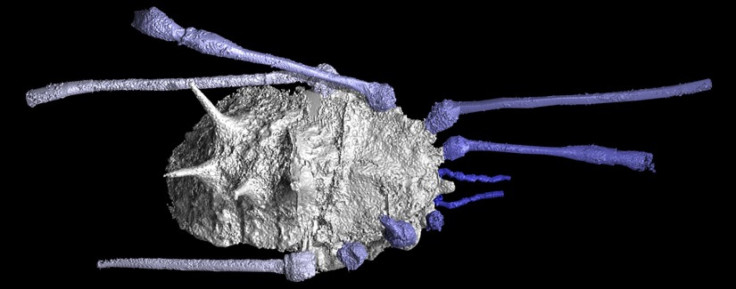Get a Glimpse of Prehistory in Your Garden (PHOTOS)

More than 300 million years ago even before the dinosaurs roamed the planet, Daddy longlegs have been scampering about the Earth. Daddy longlegs, more commonly known as harvestmen, are often mistaken for spiders. They are pretty common in backyards and gardens. The amazing thing about these creatures is that unlike scorpions and other land animals that changed a lot from its primitive forms, Daddy longlegs have remained relatively the same since the Carboniferous period.
This was confirmed by the discovery and imaging of two species that lived in the forests of what is now France before the time of the dinosaurs, reports LiveScience.com.
An international team, led by researchers from Imperial College London, has created 3D models of the two fossilized species of harvestmen. The two species fell into the Dyspnoi and Eupnoi suborders of harvestmen. The 3D virtual fossil models have also provided the researchers with further proof that the Dyspnoi and Eupnoi lineages had evolved from a common harvestmen ancestor around 305 million years ago. The researchers say their work supports earlier DNA-based studies and is important because it provides a clearer picture of the early evolution of these creatures.
It is absolutely remarkable how little harvestmen have changed in appearance since before the dinosaurs. If you went out into the garden and found one of these creatures today it would be like holding a little bit of prehistory in your hands, study researcher Russell Garwood, of Imperial College London, said in a statement.
The two fossilized species of Daddy longlegs had eight -well-long legs and a flat circular body spanning about 0.4 inches. The images of the fossilized species bear remarkable resemblance to the modern day Daddy longlegs. While researchers still can't decide exactly why the creatures stayed to similar overtime when most land animals were in such primitive form at the time, Garwood thinks that it might be because they evolved early to be good at what they do, and their bodies did not need to change any further.
The images also show how these creatures lived. Eupnoi most likely used its long, curve-tipped legs to navigate and grip fallen foliage on the forest floors, which would help keep it camouflaged from predators, the researchers said. It also had a very thin body, probably the size of a dime, with a relatively soft outer shell.
The second fossil, of the suborder Dyspnoi, had spikes on its back, which the researchers believe would have protected it from predators. It also would have lived on the forest floor, amid the moist, woody debris.
The study was published on Aug 23 in the journal Nature.
Watch the video of the 3D reconstruction here.
© Copyright Thomson Reuters 2024. All rights reserved.




















